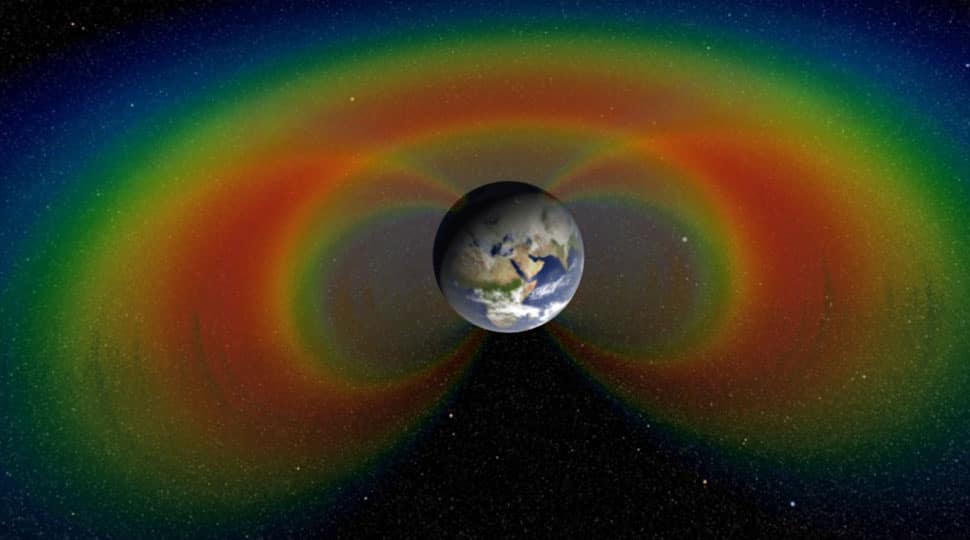World's premier space agency NASA has said that earth's protective layer is in danger and a massive chunk of the layer has weakened thus causing a dent in the shield of earth.
The phenomenon is called South Atlantic Anomaly (SAA) and NASA said that it is splitting into two and getting wider with the passage of time. The SAA has been named after its location over South America and Southern Atlantic Ocean.
It is to be noted that the magnetic field around the Earth acts as a protective shield and this shield is responisble for repelling and trapping charged particles from the Sun. According to NASA, the dent in SAA has no visible impact on daily life on the surface.
"The South Atlantic Anomaly is also of interest to NASA’s Earth scientists who monitor the changes in magnetic field strength there, both for how such changes affect Earth's atmosphere and as an indicator of what's happening to Earth's magnetic fields, deep inside the globe. Currently, the SAA creates no visible impacts on daily life on the surface. However, recent observations and forecasts show that the region is expanding westward and continuing to weaken in intensity. It is also splitting – recent data shows the anomaly’s valley or region of minimum field strength, has split into two lobes, creating additional challenges for satellite missions," NASA said.
"Earth is a bit like a bar magnet, with north and south poles that represent opposing magnetic polarities and invisible magnetic field lines encircling the planet between them. But unlike a bar magnet, the core magnetic field is not perfectly aligned through the globe, nor is it perfectly stable. That’s because the field originates from Earth’s outer core: molten, iron-rich and in vigorous motion 1800 miles below the surface. These churning metals act as a massive generator, called the geodynamo, creating electric currents that produce the magnetic field," added NASA.
"As the core motion changes over time, due to complex geodynamic conditions within the core and at the boundary with the solid mantle up above, the magnetic field fluctuates in space and time too. These dynamical processes in the core ripple outward to the magnetic field surrounding the planet, generating the SAA and other features in the near-Earth environment – including the tilt and drift of the magnetic poles, which are moving over time. These evolutions in the field, which happen on a similar time scale to the convection of metals in the outer core, provide scientists with new clues to help them unravel the core dynamics that drive the geodynamo," explained the US-based space agency.

















